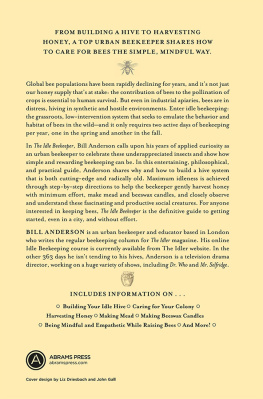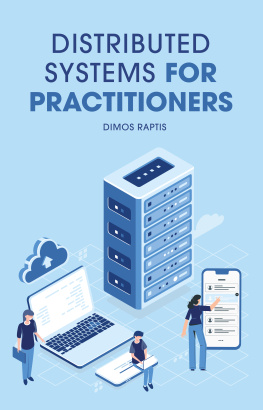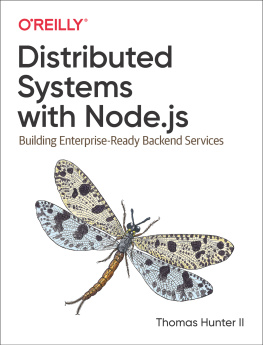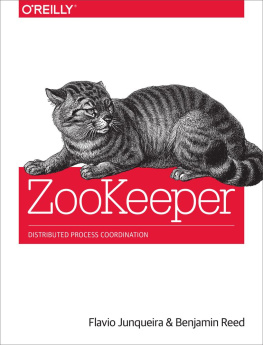Anderson - A Guide to Building Dependable Distributed Systems
Here you can read online Anderson - A Guide to Building Dependable Distributed Systems full text of the book (entire story) in english for free. Download pdf and epub, get meaning, cover and reviews about this ebook. year: 2020, genre: Politics. Description of the work, (preface) as well as reviews are available. Best literature library LitArk.com created for fans of good reading and offers a wide selection of genres:
Romance novel
Science fiction
Adventure
Detective
Science
History
Home and family
Prose
Art
Politics
Computer
Non-fiction
Religion
Business
Children
Humor
Choose a favorite category and find really read worthwhile books. Enjoy immersion in the world of imagination, feel the emotions of the characters or learn something new for yourself, make an fascinating discovery.

A Guide to Building Dependable Distributed Systems: summary, description and annotation
We offer to read an annotation, description, summary or preface (depends on what the author of the book "A Guide to Building Dependable Distributed Systems" wrote himself). If you haven't found the necessary information about the book — write in the comments, we will try to find it.
A Guide to Building Dependable Distributed Systems — read online for free the complete book (whole text) full work
Below is the text of the book, divided by pages. System saving the place of the last page read, allows you to conveniently read the book "A Guide to Building Dependable Distributed Systems" online for free, without having to search again every time where you left off. Put a bookmark, and you can go to the page where you finished reading at any time.
Font size:
Interval:
Bookmark:
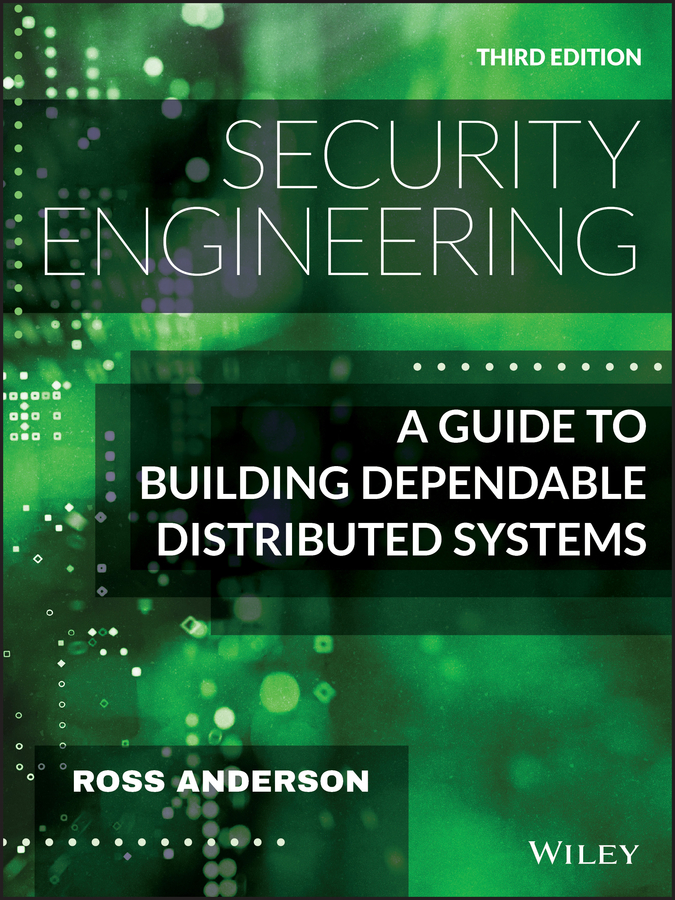
- Chapter 1
- Chapter 2
- Chapter 4
- Chapter 5
- Chapter 6
- Chapter 8
- Chapter 9
- Chapter 10
- Chapter 11
- Chapter 12
- Chapter 13
- Chapter 14
- Chapter 15
- Chapter 16
- Chapter 17
- Chapter 18
- Chapter 19
- Chapter 21
- Chapter 22
- Chapter 23
- Chapter 24
- Chapter 27
- Chapter 28

Third Edition
Ross Anderson

Copyright 2020 by Ross Anderson
Published by John Wiley & Sons, Inc., Indianapolis, Indiana
Published simultaneously in Canada and the United Kingdom.
ISBN: 978-1-119-64278-7
ISBN: 978-1-119-64283-1 (ebk)
ISBN: 978-1-119-64281-7 (ebk)
No part of this publication may be reproduced, stored in a retrieval system or transmitted in any form or by any means, electronic, mechanical, photocopying, recording, scanning or otherwise, except as permitted under Sections 107 or 108 of the 1976 United States Copyright Act, without either the prior written permission of the Publisher, or authorization through payment of the appropriate per-copy fee to the Copyright Clearance Center, 222 Rosewood Drive, Danvers, MA 01923, (978) 750-8400, fax (978) 646-8600. Requests to the Publisher for permission should be addressed to the Permissions Department, John Wiley & Sons, Inc., 111 River Street, Hoboken, NJ 07030, (201) 748-6011, fax (201) 748-6008, or online at www.wiley.com/go/permissions.
Limit of Liability/Disclaimer of Warranty: The publisher and the author make no representations or warranties with respect to the accuracy or completeness of the contents of this work and specifically disclaim all warranties, including without limitation warranties of fitness for a particular purpose. No warranty may be created or extended by sales or promotional materials. The advice and strategies contained herein may not be suitable for every situation. This work is sold with the understanding that the publisher is not engaged in rendering legal, accounting, or other professional services. If professional assistance is required, the services of a competent professional person should be sought. Neither the publisher nor the author shall be liable for damages arising herefrom. The fact that an organization or Web site is referred to in this work as a citation and/or a potential source of further information does not mean that the author or the publisher endorses the information the organization or website may provide or recommendations it may make. Further, readers should be aware that Internet websites listed in this work may have changed or disappeared between when this work was written and when it is read.
For general information on our other products and services please contact our Customer Care Department within the United States at (877) 762-2974, outside the United States at (317) 572-3993 or fax (317) 572-4002.
Wiley publishes in a variety of print and electronic formats and by print-on-demand. Some material included with standard print versions of this book may not be included in e-books or in print-on-demand. If this book refers to media such as a CD or DVD that is not included in the version you purchased, you may download this material at booksupport.wiley.com. For more information about Wiley products, visit www.wiley.com.
Library of Congress Control Number: 2020948679
Trademarks: Wiley and the Wiley logo are trademarks or registered trademarks of John Wiley & Sons, Inc. and/or its affiliates, in the United States and other countries, and may not be used without written permission. All other trademarks are the property of their respective owners. John Wiley & Sons, Inc. is not associated with any product or vendor mentioned in this book.
For Shireen, Bavani, Nav, Ivan, Lily-Rani, Veddie and Bella
I've worked with systems for over forty years. I graduated in mathematics and natural science from Cambridge in the 1970s, and got a qualification in computer engineering; my first proper job was in avionics; and after getting interested in cryptology and computer security, I worked in the banking industry in the 1980s. I then started working for companies who designed equipment for banks, and then on related applications such as prepayment electricity meters.
I moved to academia in 1992 but continued to consult to industry on security technology. During the 1990s, the number of applications that used cryptology rose rapidly: burglar alarms, car door locks, road toll tags and satellite TV systems all made their appearance. The first legal disputes about these systems came along, and I was lucky enough to be an expert witness in some of the important cases. The research team I lead had the good fortune to be in the right place at the right time when technologies such as peer-to-peer systems, tamper-resistance and digital watermarking became hot topics.
After I'd taught security and cryptology to students for a few years, it became clear to me that the existing textbooks were too narrow and theoretical: the security textbooks focused on the access control mechanisms in operating systems, while the cryptology books developed the theory behind cryptographic algorithms and protocols. These topics are interesting, and important. But they're only part of the story. Most working engineers are not overly concerned with crypto or operating system internals, but with getting good tools and learning how to use them effectively. The inappropriate use of protection mechanisms is one of the main causes of security failure. I was encouraged by the positive reception of a number of articles I wrote on security engineering (starting with Why Cryptosystems Fail in 1993). Finally, in 1999, I got round to rewriting my class lecture notes and a number of real-world case studies into a book for a general technical audience.
The first edition of the book, which appeared in 2001, helped me consolidate my thinking on the economics of information security, as I found that when I pulled my experiences about some field together into a narrative, the backbone of the story was often the incentives that the various players had faced. As the first edition of this book established itself as the standard textbook in the field, I worked on establishing security economics as a discipline. In 2002, we started the Workshop on the Economics of Information Security to bring researchers and practitioners together.
By the time the second edition came out in 2008, it was clear we'd not paid enough attention to the psychology of security either. Although we'd worked on security usability from the 1990s, there's much more to it than that. We need to understand everything from the arts of deception to how people's perception of risk is manipulated. So in 2008 we started the Workshop on Security and Human Behaviour to get security engineers talking to psychologists, anthropologists, philosophers and even magicians.
A sabbatical in 2011, which I spent partly at Google and partly at Carnegie Mellon University, persuaded me to broaden our research group to hire psychologists and criminologists. Eventually in 2015 we set up the Cambridge Cybercrime Centre to collect lots of data on the bad things that happen online and make them available to over a hundred researchers worldwide. This hasn't stopped us doing research on technical security; in fact it's helped us pick more relevant technical research topics.
Next pageFont size:
Interval:
Bookmark:
Similar books «A Guide to Building Dependable Distributed Systems»
Look at similar books to A Guide to Building Dependable Distributed Systems. We have selected literature similar in name and meaning in the hope of providing readers with more options to find new, interesting, not yet read works.
Discussion, reviews of the book A Guide to Building Dependable Distributed Systems and just readers' own opinions. Leave your comments, write what you think about the work, its meaning or the main characters. Specify what exactly you liked and what you didn't like, and why you think so.






